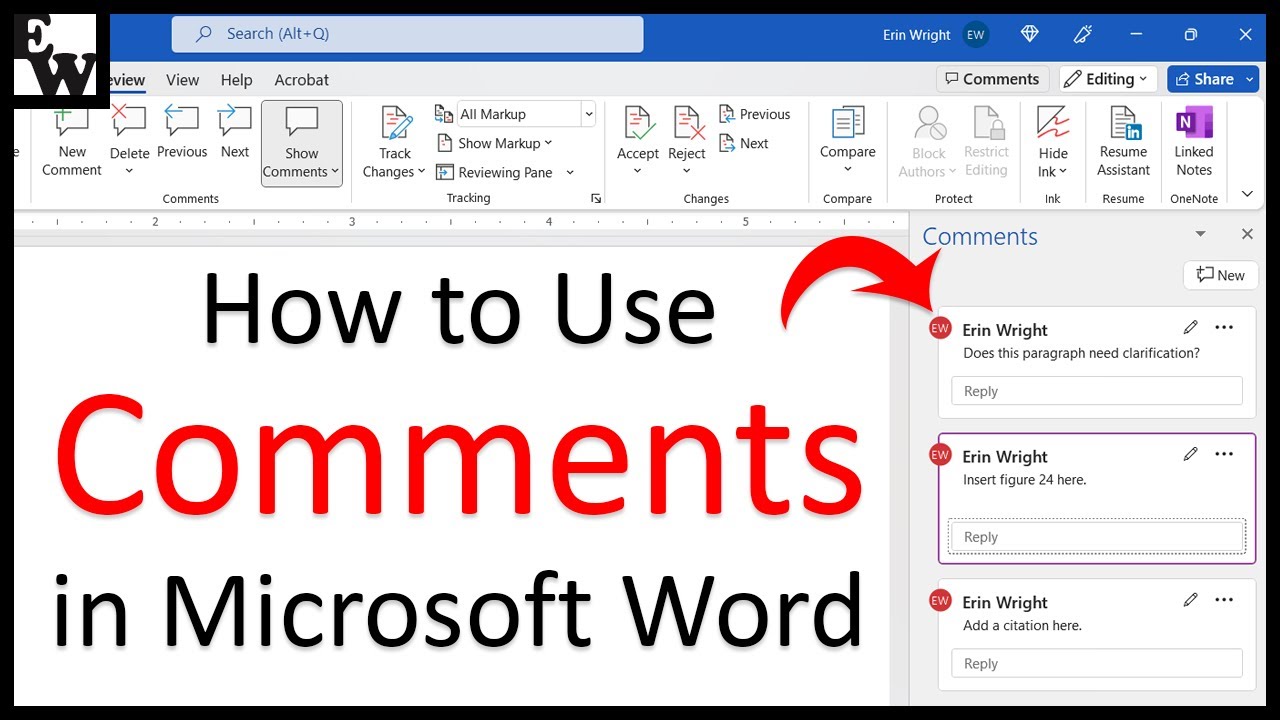
In the realm of collaborative document editing, comments serve as invaluable tools for communication, feedback, and collaboration. Whether you’re working on a group project, reviewing a colleague’s draft, or providing feedback on a document, knowing how to effectively add and manage comments in Microsoft Word is essential for facilitating collaboration and streamlining the editing process. In this extensive guide, we’ll explore the intricacies of adding comments in Microsoft Word, empowering you to harness this powerful feature to enhance collaboration and productivity.
Understanding the Role of Comments:
Before delving into the practical aspects of adding comments, it’s crucial to understand the significance of these annotations in document editing. Comments serve multiple purposes, including:
- Providing feedback: Comments allow reviewers to offer suggestions, ask questions, or provide insights on specific sections of a document.
- Tracking changes: Comments provide a record of edits, revisions, and discussions throughout the document editing process.
- Facilitating collaboration: Comments enable multiple users to communicate and collaborate on a document simultaneously, regardless of geographic location or time zone.
By incorporating comments into your document editing workflow, you can streamline communication, clarify intentions, and ensure that everyone involved in the editing process is on the same page.
Basic Comment Insertion:
Adding comments in Microsoft Word is a straightforward process that can be accomplished using intuitive tools and commands. Here’s how to do it:
- Select the Text:
- Begin by selecting the text to which you want to add a comment. You can do this by clicking and dragging your cursor over the desired text or by placing your cursor at the beginning of the text and holding down the mouse button while dragging to the end of the selection.
- Insert a Comment:
- With the text selected, right-click on the highlighted text to reveal a context menu.
- From the context menu, select “New Comment.” Alternatively, you can navigate to the “Review” tab in the top menu bar, then click on the “New Comment” button in the “Comments” group.
- Enter Your Comment:
- A comment bubble will appear in the margin next to the selected text, along with a text box where you can enter your comment.
- Type your comment in the text box and press “Enter” to save it. Your comment will be displayed in the margin, adjacent to the selected text, along with your name and a timestamp.
Advanced Comment Features:
While basic comment insertion suffices for most scenarios, Microsoft Word offers advanced features and customization options to enhance the functionality and usability of comments. Here are some additional features you may explore:
- Replying to Comments:
- To facilitate threaded discussions and responses, Word allows users to reply to existing comments. Simply click on the “Reply” button within a comment bubble to add a response directly below the original comment.
- Formatting Comments:
- Word provides basic formatting options for comments, allowing users to apply bold, italic, underline, and other formatting styles to text within comments. To format text in a comment, select the text and use the formatting tools in the “Home” tab.
- Managing Comments:
- As documents accumulate comments, it’s essential to manage them efficiently. Word offers features for navigating, reviewing, and resolving comments, including options to view all comments, filter comments by reviewer, and mark comments as resolved once addressed.
Best Practices for Comment Usage:
While comments offer versatility and functionality in document collaboration, it’s essential to use them judiciously and in accordance with best practices. Here are some tips to consider:
- Be Clear and Concise:
- When adding comments, strive to be clear, concise, and constructive. Clearly articulate your feedback, suggestions, or questions to facilitate understanding and action.
- Use @ Mentions:
- To direct a comment to a specific colleague or collaborator, use the “@” mention feature. Simply type “@” followed by the person’s name or email address to tag them in the comment, prompting them to review and respond.
- Resolve Comments Promptly:
- As the document owner or editor, it’s important to review and address comments in a timely manner. Promptly resolve comments once they’ve been addressed or incorporated into the document to maintain momentum and keep the editing process moving forward.
Conclusion:
Adding comments in Microsoft Word is a powerful tool for facilitating collaboration, communication, and feedback in document editing. By mastering the basic insertion process, exploring advanced features, and adhering to best practices for comment usage, you can streamline collaboration, foster productive discussions, and ensure the quality and integrity of your documents. Whether you’re working on a team project, providing feedback on a colleague’s work, or seeking input from stakeholders, comments offer a flexible and efficient means of communication and collaboration. So, the next time you embark on a document editing journey in Word, remember to leverage the power of comments to enhance collaboration and drive success.